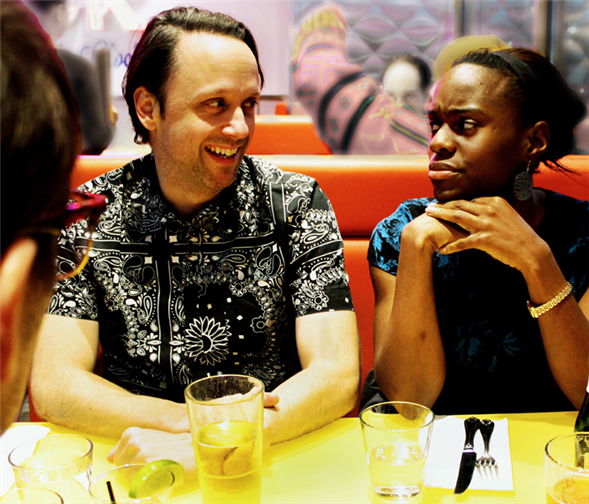Translate Page

The essential mystery of How to Get Into Buildings
---
You can understand a play even if it doesn't make sense. We don't need to literally comprehend every aspect of a production in order to grasp the larger story, the larger point.
To cite a classic example – what exactly is that "sound of a breaking string" that we hear in The Cherry Orchard? There's really no answer to the question. The sound effect is a mystery, teasing our imaginations as we parse the more familiar drama of a family's collapsing fortunes.
Artists often love these inexplicable touches, since they can add so much texture to a show. But using them well means more than just dreaming up weird noises. If the unknowable is going to feel meaningful (instead of just obscure), it needs the right context, the right relationship with the more traditionally accessible portions of a production.
Or as Trish Harnetiaux and Susan Bernfield might say, weird plays need anchors. And they should know. Harnetiaux is a playwright, and her play How To Get Into Buildings is running through December 19 at the Brick in a production from New Georges, where Bernfield is artistic director. They've been working together for months to guarantee the show can reach people without losing its essential, delightful strangeness.
"We keep calling those [universal] moments anchors," Harnetiaux says during a recent conference call. "When you start breaking structure like this, you want to know that someone knows what they're doing, or else you won't trust the experience you're having as an audience member. You won't feel taken care of."
Bernfeld, also on the call, echoes her. "The more people on stage make choices that are grounded in whatever's happening – the more they seem fully committed to whatever it is they're doing – the more the audience will go with them," she says. "The more there's an emotional opening at the very beginning, the more license you have to go crazy and go all over the map."
The emotional anchors come quickly in How to Get Into Buildings. In the first few minutes, we meet two couples who are in very different places in their relationships: Lucy and Roger are nervous dorks just starting to know each other, while Nick and Daphne are so close to the end that they fight about omelets. Throughout the show, we keep coming back to these people, watching them connect (or not) over meals. Their conversations feel recognizable and real.
At the same time, the world around them keeps wildly changing. Harnetiaux's play has what she calls an "exploded structure," meaning that small moments of both relationships are broken out of their chronological timeline and studied again and again. A little bit of Lucy and Roger's first conversation might bump against Nick and Daphne's most mundane exchange, inviting us to see both sides in contrast.
And on top of that, there are scenes featuring Ethan, a novelist who writes about love and also seems to be writing about the other characters. Is that him hiding behind a plant to spy on them? Is that him pretending to be a waiter so he can tell them things? Or is he actually a waiter sometimes? And meanwhile, who is the older woman that Lucy keeps calling? Why does Lucy keep telling this lady her secrets?
{Image1}
There's no "correct" way to interpret these details. Still, it's clear that every scene and digression and sudden burst of comedy is connected to the central story of two couples falling in and out of love. Somehow, always, this show is about what it feels like to be connected to someone else.
Harnetiaux's story was inspired after she saw an art installation that reassembled the objects in a room that had recently been blown up. "The energy between the parts seemed to tell such a moving story," she says. "You can look at little pieces of [the room], and you can understand them and see how they exist in time. So from there, the exploded view structure became a no-brainer to me. You can tell a story about how something comes together or falls apart."
Crucially, she was able to develop the play with a series of theatre companies that encouraged her to push the formal envelope. Since 2012, How to Get Into Buildings has been nurtured by troupes like Soho Rep and Ars Nova, and Bernfield herself was familiar with the script before New Georges decided to give it a full production. (Crucially, the Brick was offering a residency to the production's director, Katherine Brook, which meant there was a space available.)
"I've been curious about what it would be like on stage," Bernfield says. "That kind of curiosity is usually what leads me toward the things we produce. I'm always interested in something that I could never think to do myself."
---
Follow Mark Blankenship at @IAmBlankenship. Follow TDF at @TDFNYC.
Photos by Andrew Callot. Top photo: Mike Iveson as Nick and Stephanie Weeks as Daphne.